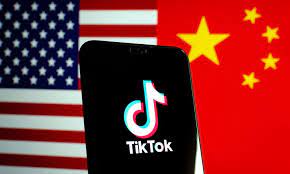
To begin, TikTok is a social media platform that allows people to watch and create short clip videos. So many people, such as influencers became early adopters of this app due to the fact that they were getting more views and followers than other platforms such as Youtube. They were making quick and easy money from their minute-long videos and soon this app blew up. Today, Tik-Tok has over 750 million users which makes it now the third-largest worldwide social media network. Although it is one of the most highly used social media platforms, it also has a few negatives. There is a major negative connotation around TikTok and how the government may be following you and “spying” on you through your online behavior through the app. For instance, In 2019, TikTok was accused of secretly gathering user data and sending it to China.
With this in mind, it’s equally as important that we have late adopters and not just early adopters. Late adopters are people who start using a new product, especially a new piece of technology, later than many other people. They are responsible for making sure that innovation does not fail before they adopt it. The late adopters of this app have evolved in many ways, and have created their own innovations to keep the app now so that it doesn’t repetitive. The early adopters are the ones that influenced the late adopters. Especially in the case of Tik-Tok because we see this in older generations who are not as used to the success of social media applications. For instance, TikTok caters to the younger generation, with 60% being Gen Z users. However, it also has become popular with older generations too.
Many people ask the question of why they are on TikTok more than any other social media such as Facebook, Twitter, Instagram, etc. For me personally, TikTok is one of the most highly used social media apps that I have. This is because I find it much more engaging than things such as scrolling through pictures on Instagram. It also doesn’t feel like you are on it for so long due to the shortness of the video clips. I would classify myself in the middle majority category since I didn’t download the app right when it became popular but eventually did download it after all my friends got it. In the end, the research that I found actually helped me to understand the diffusion model. I was able to apply this knowledge and think about it through the lens of TikTok and how I personally use the app. It made me realize how far the app has come through its success and failures, and how much it has grown versus when it first started. Although there are some negative aspects to the app, the positives definitely outweigh them because of how successful TikTok has become and how much of an influence it has on our world.




No comments:
Post a Comment